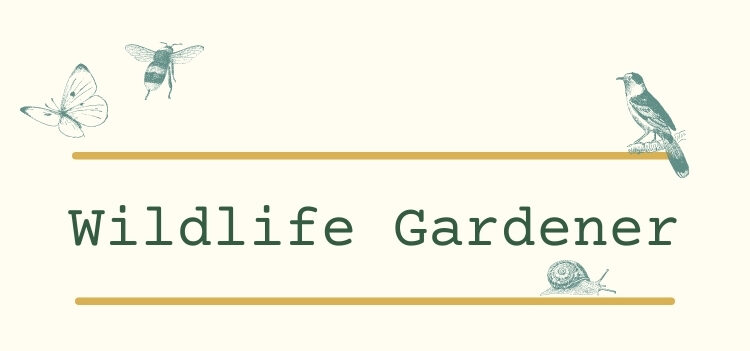Birds are eternally popular garden visitors and single-handedly account for the purchase of more wildlife related products than any other group. From magazines and guide books, to bird-boxes and binoculars, our feathered friends have us buying all manner of bits and bobs – and that’s before we’ve even begun to think about all those peanuts and fat balls!
For all that they seem so familiar, they can also be a bit secretive and we almost never glimpse some aspects of their lives, unless we’re very lucky. You probably have one or two particular favourites that visit your garden, but how much do you really know about them? Are you an expert on garden birds – or do they have you completely fooled as to what they’re really up to in your back yard?
Have a bit of fun with our quick quiz and find out – the answers are at the bottom.
1.Here’s an easy one to start off with; who’s responsible for all those broken snail shells?
- a) Blackbird
- b) Goldfinch
- c) Thrush
2.We all know that a female Blackbird is brown, but what does a female Goldfinch look like?
- a) Much the same as the male Goldfinch.
- b) Like the male, but without his yellow wing bars.
- c) A drab olive brown bird, like a female sparrow.
3. When do birds make use of nesting boxes?
- a) When they’re nesting – doh!
- b) In the winter.
- c) Both (a) and (b)
4. A couple of feeding questions now. Firstly, why are black sunflower seeds best?
- a) They have more oil content than the stripy kind.
- b) They have less oil content than the stripy kind.
- c) Birds see them better.
5. Secondly, why won’t just any old peanuts do for birds?
- a) Proper “bird” peanuts benefit animal charities.
- b) Some kinds are harmful to birds.
- c) Cheap peanuts often exploit growers in developing countries.
6. Which is the smallest bird commonly found in the UK ?
- a) Wren
- b) Firecrest
- c) Goldcrest
7. The Robin is a great favourite on snowy Christmas cards, but is it:
- a) A UK resident?
- b) A winter visitor?
- c) Both?
8.What does the male Chaffinch lose in the winter?
- a) His distinctive grey skull-cap.
- b) His tail feathers.
- c) His white wing bars.
9. What’s the most instantly noticeable thing about a Grey Wagtail?
- a) It doesn’t wag its tail.
- b) Its chest and underside are a lemon yellow.
- c) It is actually black and white.
10. Which of these three is a summer visitor to Britain?
- a) Redstart
- b) Fieldfare
- c) Long-tailed Tit
Answers
1. It’s (c) the Song Thrush, although Blackbirds aren’t above stealing the odd snail if they get a chance once the Thrush has done all the hard work!
2. It’s (a), much the same as the male; females tend to have a slightly smaller red “mask” – but you’d be forgiven for not noticing!
3. Answer (c) – although obviously they will use them to nest in, they often also shelter in them during the winter, especially when the weather turns harsh.
4. It’s (a), black sunflower seeds have more oil than the stripy kind, providing a high-energy food particularly in bad weather.
5. While (a) and (c) may be true, (b) certainly is, so always buy your peanuts from a reputable source to avoid harming your visitors.
6. It’s (c) the Goldcrest. Although the Wren used to appear on the back of Britain’s smallest coin (the farthing) from 1937 until 1956, it isn’t the smallest bird. At 4 inches (10cm) it is half-an-inch longer than both the Goldcrest and the Firecrest – making a dead-heat between them in size terms. What tips the balance to the Goldcrest is that while the Firecrest has only an estimated maximum of 250 breeding pairs in parts of southern England, the RSPB put the number of Goldcrest breeding territories at 842,000 across the whole of the UK – making it far more common. Give yourself a bonus point, however, if you knew that these two actually were the same size.
7. The answer is (c); resident Robins are joined in the winter by birds from Europe and Scandinavia. That bright red-breasted fellow perched on your spade is, however, most likely British through and through, since European Robins tend to be duller and are generally more wary around people. Have another bonus point if you knew that all along!
8. It’s (a), he loses his distinctive grey cap.
9. Despite the name, the chest and underside of the Grey Wagtail are lemon yellow, although its back is slate grey – so the answer is (b).
10. The Fieldfare is a winter visitor, the Long-tailed Tit is a year-round resident so the answer is the (a) the Redstart
How Did You Do?
- 11 – 12, Flying high!
- 8 – 10, Soaring away
- 5 – 7, Flapping well
- 3 – 4, Fully feathered
- 0 – 2, Bit of a fledgling
Enjoy the birds in your garden!

